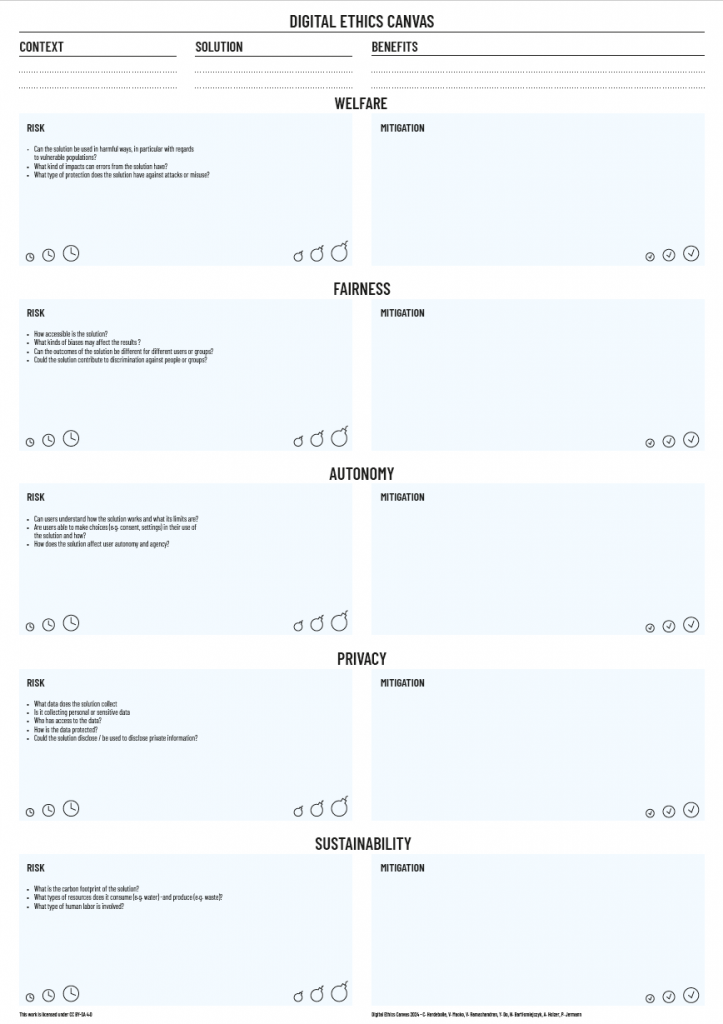Ethical issues with software released to the public are so widespread that some researchers have coined the term ethical debt to represent the unpaid cost of the negative impacts for individuals, societies and our environment.
A key to reduce ethical debt is to systematically assess ethical risks at all stages of the design and development process. However, previous research shows that it is particularly difficult for novice engineers to identify risks, to determine priorities and to design mitigation measures.
We have designed a visual tool called the “Digital Ethics Canvas” that guides students in assessing ethical risks with 5 “ethical lenses” specific to the digital domain: welfare, fairness, autonomy, privacy and sustainability.

The canvas includes questions to help students surface elements in a digital solution that are likely to give rise to risks. Mitigation options can also be contributed. Overall, the canvas implements a benefit-risk analysis which is adapted to approach ethical dilemmas.
You can learn more in our latest publication.